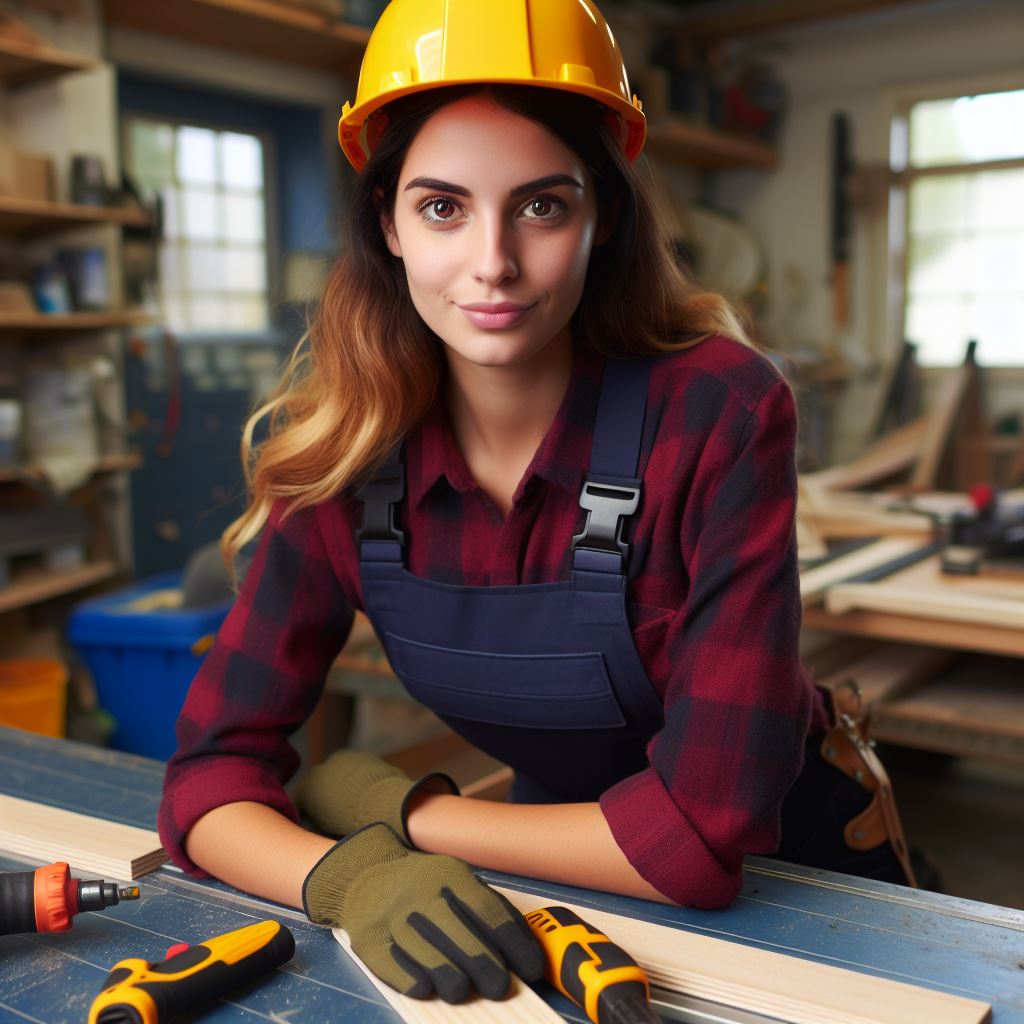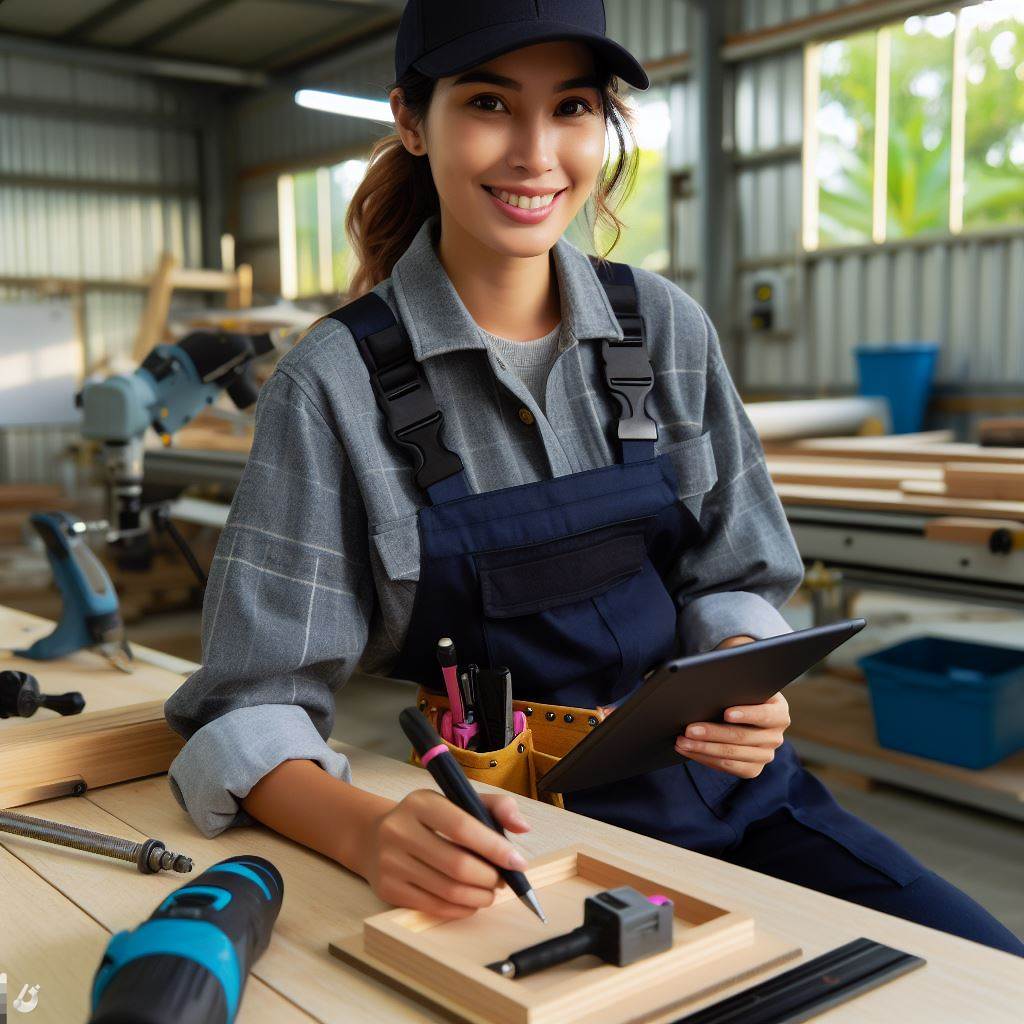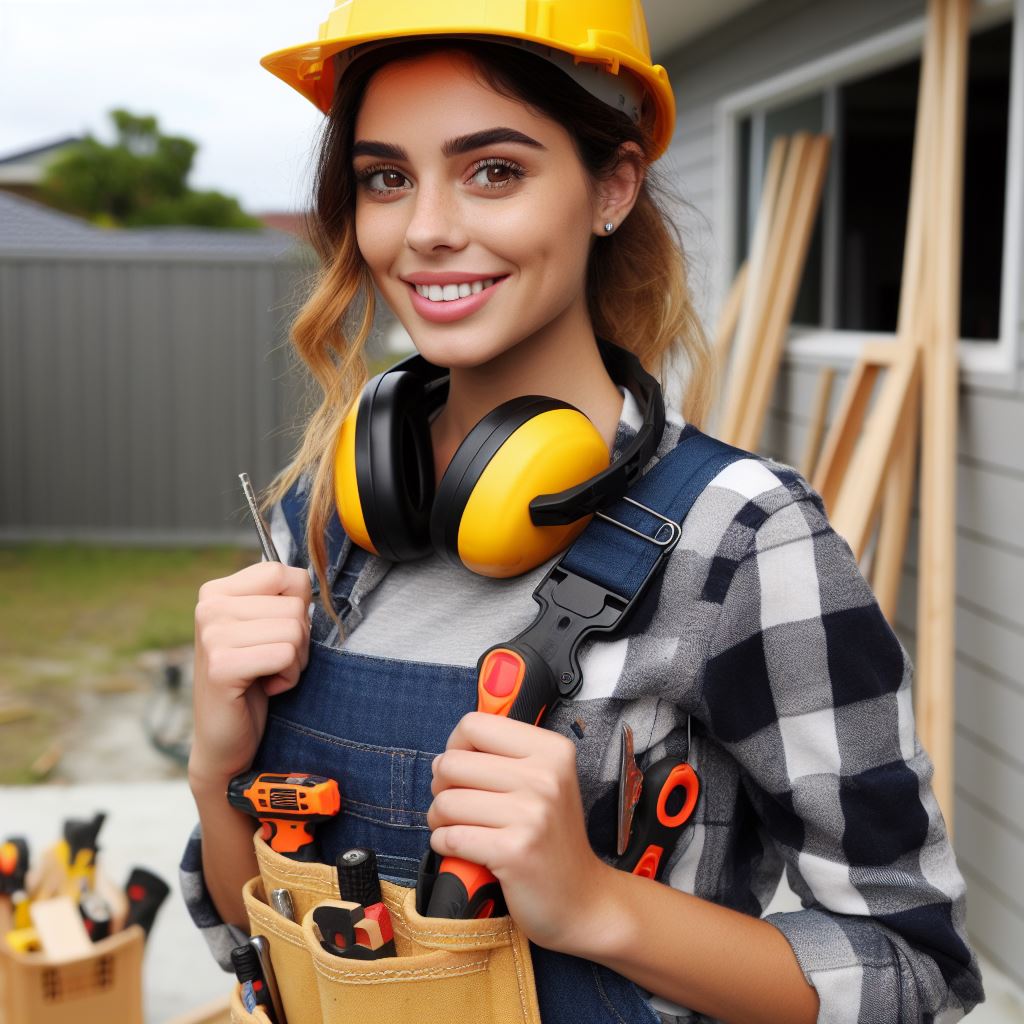Introduction
Carpentry safety is of utmost importance in the Australian construction industry.
The purpose of this blog post is to provide Australian carpentry professionals with essential safety tips.
- Wearing appropriate personal protective equipment (PPE) is crucial for carpentry safety.
- Regularly inspecting and maintaining tools and equipment can prevent accidents and injuries.
- Creating a clutter-free workspace ensures better visibility and reduces the risk of tripping.
- Properly storing and securing materials can prevent falls and potential injuries.
- Following safe lifting techniques can prevent back strains and other musculoskeletal injuries.
- Using scaffolding and ladders correctly is essential to avoid falls from heights.
- Avoiding distractions and staying focused on the task at hand minimizes the risk of accidents.
- Communicating effectively with colleagues about potential hazards promotes a safer working environment.
- Regular training and updating knowledge on safety regulations is essential for carpentry professionals.
- Reporting near misses and incidents helps identify potential hazards and improve safety measures.
- Generally: Implementing carpentry safety measures is a responsibility that should never be overlooked.
- By prioritizing safety, Australian carpentry professionals can reduce accidents, injuries, and enhance their overall well-being.
Read: Top Plumbing Trends in Australian Engineering
Common Hazards in Carpentry
When it comes to carpentry, there are several common hazards that professionals must be aware of. By understanding these hazards and following safety tips, Australian carpenters can effectively prevent accidents and injuries. Here are some of the most common hazards in carpentry:
Falls from Heights
- Working at heights is a common part of carpentry, increasing the risk of falls.
- Always ensure that scaffolds, ladders, and elevated platforms are sturdy and secure.
- Use fall arrest systems, such as harnesses and lanyards, to prevent falls.
- Secure tools and materials to prevent them from falling and causing injuries.
- Regularly check and maintain fall protection equipment to ensure optimal functionality.
- Stay vigilant and cautious when working near edges or openings.
Injuries Caused by Power Tools
- Power tools are essential in carpentry, but they can also pose serious hazards.
- Always wear appropriate personal protective equipment (PPE) when operating power tools.
- Ensure that power tools are maintained in good condition and inspected for any defects.
- Always follow the manufacturer’s instructions and safety guidelines when using power tools.
- Keep your workspace clean and free from clutter to prevent accidents and injuries.
- Take regular breaks to prevent fatigue, as it can increase the risk of accidents.
Exposure to Hazardous Materials
- Carpentry often involves working with hazardous materials, such as paints, solvents, and chemicals.
- Always use appropriate personal protective equipment, such as gloves and masks, when handling hazardous materials.
- Ensure that your workspace is well-ventilated to minimize exposure to hazardous fumes.
- Store hazardous materials in designated areas and follow proper disposal procedures.
- Read and follow the safety data sheets (SDS) provided by manufacturers for proper handling and storage.
Fire Hazards
- Carpentry workshops and job sites are susceptible to fire hazards.
- Ensure that your workspace is equipped with fire extinguishers and that they are easily accessible.
- Regularly inspect electrical cords and equipment for any damage or potential fire hazards.
- Keep flammable materials stored in proper containers away from sources of ignition.
- Follow proper electrical wiring practices and avoid overloading circuits.
- Establish an emergency evacuation plan and ensure all workers are aware of it.
By being aware of these common hazards and implementing safety measures, Australian carpenters can significantly reduce the risk of accidents and injuries, promoting a safer working environment for everyone involved.
Read: The Future of Plumbing Tech in Australia
Discover More: Carpentry Specializations: Aussie Insights
Safety measures and tips
Personal Protective Equipment (PPE)
- Head protection: Always wear a hard hat to protect your head from falling objects.
- Eye and face protection: Use safety goggles or face shields to shield your eyes and face from debris.
- Respiratory protection: Use respiratory masks or respirators to prevent inhalation of harmful substances.
- Hand protection: Wear sturdy gloves to protect your hands from cuts, abrasions, and chemical exposure.
- Foot protection: Wear safety boots or shoes with reinforced toes to protect your feet from falling objects or sharp hazards.
Fall prevention
- Proper use of ladders and scaffolds: Ensure that ladders and scaffolds are stable and in good condition before use. Use fall arrest systems when necessary.
- Fall protection systems: Install guardrails, safety nets, or harnesses to prevent falls from heights.
- Securing work areas: Keep work areas clean and clutter-free to prevent tripping hazards.
Safe use of power tools
- Training and certification: Receive proper training and certification before operating power tools to ensure competence and safety.
- Regular maintenance and inspection: Keep tools well-maintained and inspect them regularly for any damage or defects.
- Proper handling and storage: Follow manufacturer’s guidelines for safe handling and storage of power tools to prevent accidents.
- Use of guards and protective devices: Always use appropriate guards and protective devices to protect against flying debris and contact injuries.
Handling hazardous materials
- Identifying and labeling hazardous substances: Clearly label containers with the appropriate hazard symbols and provide safety data sheets.
- Proper storage and disposal: Store hazardous materials in designated areas, and dispose of them according to regulations.
- Using suitable ventilation and respiratory protection: Ensure proper ventilation and use respiratory protection when working with hazardous fumes or dust.
Fire safety
- Fire prevention measures: Keep work areas clean and free of flammable materials. Store flammable substances in approved containers.
- Emergency exits and evacuation plans: Familiarize yourself with emergency exits and evacuation procedures in case of fire.
- Proper storage and handling of flammable materials: Store flammable substances away from ignition sources and follow proper handling procedures.
By following these safety measures and tips, Australian carpentry professionals can minimize the risk of accidents and ensure a safe working environment.
Read: A Day in the Life of an Aussie Plumber

Discover More: Eco-Friendly Landscaping in Australia
See Related Content: Aussie Welders & the Construction Boom
Learn More: Aussie Innovations in Mechanical Engineering
Importance of training and education
When it comes to carpentry safety in Australia, training and education play a crucial role in ensuring the well-being of professionals.
Benefits of formal carpentry safety training
- Formal safety training equips carpenters with the necessary knowledge and skills to identify and minimize hazards.
- It provides a solid foundation for understanding safety protocols and implementing best practices on the job.
- Through training, carpenters become more aware of potential risks and develop a proactive mindset towards safety.
- Proper training reduces the chances of accidents, injuries, and even fatalities in the workplace.
- Trained carpenters are more likely to be sought after by employers, increasing their job prospects and earning potential.
Availability of safety courses and certifications
- Australia offers a wide range of safety courses specifically designed for carpenters.
- These courses are accessible through vocational training providers, online platforms, and industry organizations.
- Carpenters can choose from basic safety courses to advanced certifications tailored to their experience level.
- Completing these courses and obtaining certifications demonstrates a commitment to safety and enhances professional credibility.
- Employers often prefer carpenters who have a recognized safety certification, leading to better job opportunities.
Continuous learning and staying updated with safety regulations
- Safety regulations and guidelines are constantly evolving, making continuous learning essential for carpenters.
- By staying updated, carpenters can implement the latest safety practices and comply with industry standards.
- Regular training refreshes their knowledge and allows them to adapt to new technology and equipment.
- Carpenters must actively engage in ongoing education to address emerging risks and ensure a safe working environment.
- Being updated with safety regulations also protects carpenters from legal liabilities and potential penalties.
In review, training and education are of utmost importance in carpentry safety in Australia. Engaging in formal safety training provides numerous benefits, such as acquiring skills, increasing job prospects, and reducing workplace accidents.
With a wide availability of safety courses and certifications, carpenters have ample opportunities to enhance their knowledge and credibility.
Moreover, continuous learning enables carpenters to stay updated with evolving safety regulations, ensuring they can adapt to changes and maintain a safe working environment.
Read: How to Become a Plumber in Australia
Your Personalized Career Strategy
Unlock your potential with tailored career consulting. Get clear, actionable steps designed for your success. Start now!
Get StartedFind Out More: Renewable Energy and Aussie Mech Eng
You Might Also Like: How to Become a Mech Engineer in Australia
Conclusion
To sum it up, it is essential to recap the key carpentry safety tips for Australian professionals.
By prioritizing safety in their work, Australian carpentry professionals can ensure a secure and productive environment.
In closing, safety stands as the cornerstone of success for Australian carpentry professionals.
The construction industry demands unwavering commitment to safeguarding well-being.
Rigorous training and strict adherence to safety protocols create a robust shield against potential hazards.
By integrating safety measures into daily practices, carpenters not only protect themselves but also contribute to a culture of responsibility within the industry.
Vigilance is a continuous process, and staying updated on the latest safety standards ensures adaptability to evolving work environments.
Australian carpenters, equipped with a safety-first mindset, lay the foundation for a resilient and thriving construction sector.
In essence, the lastly resonates with the principle that a secure workplace is the bedrock for a flourishing and injury-free carpentry career in Australia.




